|
|
 |
|
Calanoida ( Order ) |
|
|
|
Calanoidea ( Superfamily ) |
|
|
|
Paracalanidae ( Family ) |
|
|
|
Parvocalanus ( Genus ) |
|
|
| |
Parvocalanus scotti (Früchtl, 1923) (F,M) | |
| | | | | | | Syn.: | Paracalanus pygmaeus : T. Scott, 1894 b (p.27, figs.F);
Paracalanus crassirostris scotti Früchtl, 1923 (p.456); 1924 b (p.37-39); Marques, 1949 (p.21, figs.F,M); 1951 (p.13); 1953 (p.96); 1955 (p.17); 1957 (p.34); 1958 (p.224);
Paracalanus crassirostris : Unterüberbacher, 1964 (p.18, figs.F, Rem.);
Paracalanus scotti : Vervoort, 1963 b (p.109, figs.F, Rem.); Neto & Paiva, 1966 (p.20, Table III, annual cycle); Wellershaus, 1969 (p.250:, Table 1); Binet, 1970 (p.46); Binet & Dessier, 1971 (p.424); Binet & al., 1972 (p.69); Dessier, 1979 (p.83, 201, 204); Brenning, 1982 (p.3, spatial distribution, T-S diagram, Rem.); 1985 a (p.16, 24, Table 2); Diouf & Diallo, 1987 (p.260); Peterson & al., 1990 (p.259, Table V: feeding); Verheye & al., 1994 (p.155) | | | | Ref.: | | | Bradford, 1978 (p.133); Andronov & Maigret, 1980 (p.71); Hiromi, 1987 (p.153, fig.F); Bradford-Grieve & al., 1999 (p.878, 911, figs.F); Kesarkar & Anil, 2010 (p.403: Table 2); Ramirez & al., 2011 (p.763, Rem.); S.Y. Moon & al., 2014 (p.45: F) | 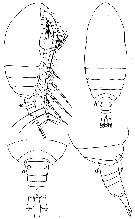 issued from : W. Vervoort in Atlantide Report., 1963, 7. [p.110, Fig.11]. As Paracalanus scotti. Female (from Niger Delta, Nigeria): a-b, habitus (lateral and dorsal, respectively) (x135); c-d, posterior part cephalothorax and urosome (dorsal and lateral, respectively) (x375).
|
 issued from : W. Vervoort in Atlantide Report., 1963, 7. [p.111, Fig.12]. As Paracalanus scotti. Female: a-d, P1 to P4 (x375); e, P5 (x550).
|
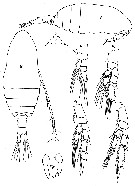 issued from : H.K. Unterüberbacher in Investl Rep. mar. Res. Lab. S.W. Afr., 1964, 11. [Pl.26]. As Paracalanus crassirostris. Female (from coastal raea of Namibia): habitus (dorsal and lateral); R, rostrum (dorsal view); P1 to P5.
|
 issued from : K.S. Kesarkar & A.C. Anil in J. mar. Biol. Ass. UK, 2010, 90 (2); [p.403, Table 2]. Characteristics of females.
|
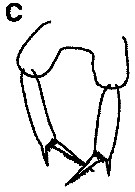 issued from : K.S. Kesarkar & A.C. Anil in J. mar. Biol. Ass. UK, 2010, 90 (2); [p.407, Fig.5, MC. Female: C, P5.
|
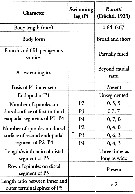 Issued from : S. Y. Moon, S.-H. Youn & H.Y. Soh in ZooKeys, 2014, 456. [p.42, Table I]. Female : marphological characters. Compare with other species of Parvocalanus : ( arabiensis, crassirostris, dubia, elegans, latus, serratipes, leei).
| | | | | NZ: | 4 | | |
|
Distribution map of Parvocalanus scotti by geographical zones
|
| | | 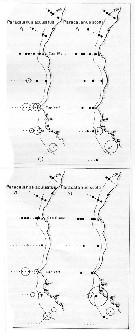 issued from : U. Brenning in Wiss. Z. Wilhelm-Pieck-Univ. Rostock - 31. Jahrgang 1982. Mat.-nat. wiss. Reihe, 6. [p.1, Figs.1, 2]. issued from : U. Brenning in Wiss. Z. Wilhelm-Pieck-Univ. Rostock - 31. Jahrgang 1982. Mat.-nat. wiss. Reihe, 6. [p.1, Figs.1, 2].
Spatial distribution for Paracalanus aculeatus, and Paracalanus scotti (= Parvocalanus scotti) from 8° S - 26° N; 16°- 20° W, for diferent expeditions (V1: Dec. 1972- Jan. 1973; VI: May 74). |
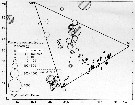 issued from : U. Brenning in Wiss. Z. Wilhelm-Pieck-Univ. Rostock - 31. Jahrgang 1982. Mat.-nat. wiss. Reihe, 6. [p.2, Fig.3]. issued from : U. Brenning in Wiss. Z. Wilhelm-Pieck-Univ. Rostock - 31. Jahrgang 1982. Mat.-nat. wiss. Reihe, 6. [p.2, Fig.3].
T-S diagram for Paracalanus aculeatus, and Paracalanus scotti (= Parvocalanus scotti from 8° S - 26° N; 16°- 20° W and Namibia for diferent expeditions.
SO: Southern Surface Water (S °/oo: 34,50; T°C: 29,0); ND: Northern Water of the Surface Layer (S °/oo: 37,5; T°C: 21,0); SD: Southern Deep Water of the surface layer (S °/oo: 35,33; T°C: 13,4). See commentary in Temora stylifera and Brenning (1985 a, p.6).
Nota: This species is found off NW Africa in very warm, but off SW Africa also in cool, waters. |
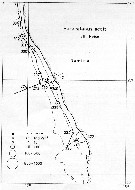 issued from : U. Brenning in Wiss. Z. Wilhelm-Pieck-Univ. Rostock - 31. Jahrgang 1982. Mat.-nat. wiss. Reihe, 6. [p.4, Fig.6]. issued from : U. Brenning in Wiss. Z. Wilhelm-Pieck-Univ. Rostock - 31. Jahrgang 1982. Mat.-nat. wiss. Reihe, 6. [p.4, Fig.6].
Spatial distribution for Paracalanus scotti (= Parvocalanus scotti) from expedition VIII (21/9-17/12 1976). |
| | | | Loc: | | | Benguela Current, Namibia, Angola, Baia Farta, Congo, G. of Guinea, Ivorian coast, Guinea-Bissau, Casamance, Mauritania, Argentina (off Mar del Plata) | | | | N: | 16 | | | | Lg.: | | | (14) F: 0,671-0,638; (257) F: 0,72-0,6; (433) F: 0,7-0,52; (434) F: 0,74-0,53; M: 0,57-0,35; (1112) F: 0,58-0,77; M: 0,53 [NW Africa]; F: 0,67-0,86; M: 0,63-0,67 [Namibia]; {F: 0,52-0,74; M: 0,35-0,67} | | | | Rem.: | coastal and in estuaries.
Vervoort (1963 b, p.110) is convinced that the species originally recorded by T. Scott (1894, p.27) from the Gulf of Guinea as P. pygmaeus cannot possibly be identified with P. crassirostris Dahl, 1894. A study of the topotypic Atlantide material has made quite clear that the differences between Dahl's and T. Scott's foroms are even larger than those mentioned by Früchtl; so that in the Vervoort's opinion T. Scoot's species should receive specific rank.; it is particularly characterized by the short, fairly highly vaulted cephalothorax, the thick, 2-pointed rostrum terminating into acute points, the structure and length of A1 and the spinulation of the legs. In the Atlantide specimens the separation between the 4th and 5th thoracic somites is distinctly marked; A1 reach the end of the caudal rami and the terminal segment is about 1.5 times as long as the penultimate segment. The legs are remarkable by the 1-segmented condition of the endopodite of P1; the number of setae (6) on this endopodite is not reduced. | | | Last update : 07/04/2018 | |
|
|
 Any use of this site for a publication will be mentioned with the following reference : Any use of this site for a publication will be mentioned with the following reference :
Razouls C., Desreumaux N., Kouwenberg J. and de Bovée F., 2005-2025. - Biodiversity of Marine Planktonic Copepods (morphology, geographical distribution and biological data). Sorbonne University, CNRS. Available at http://copepodes.obs-banyuls.fr/en [Accessed October 21, 2025] © copyright 2005-2025 Sorbonne University, CNRS
|
|
 |
 |











